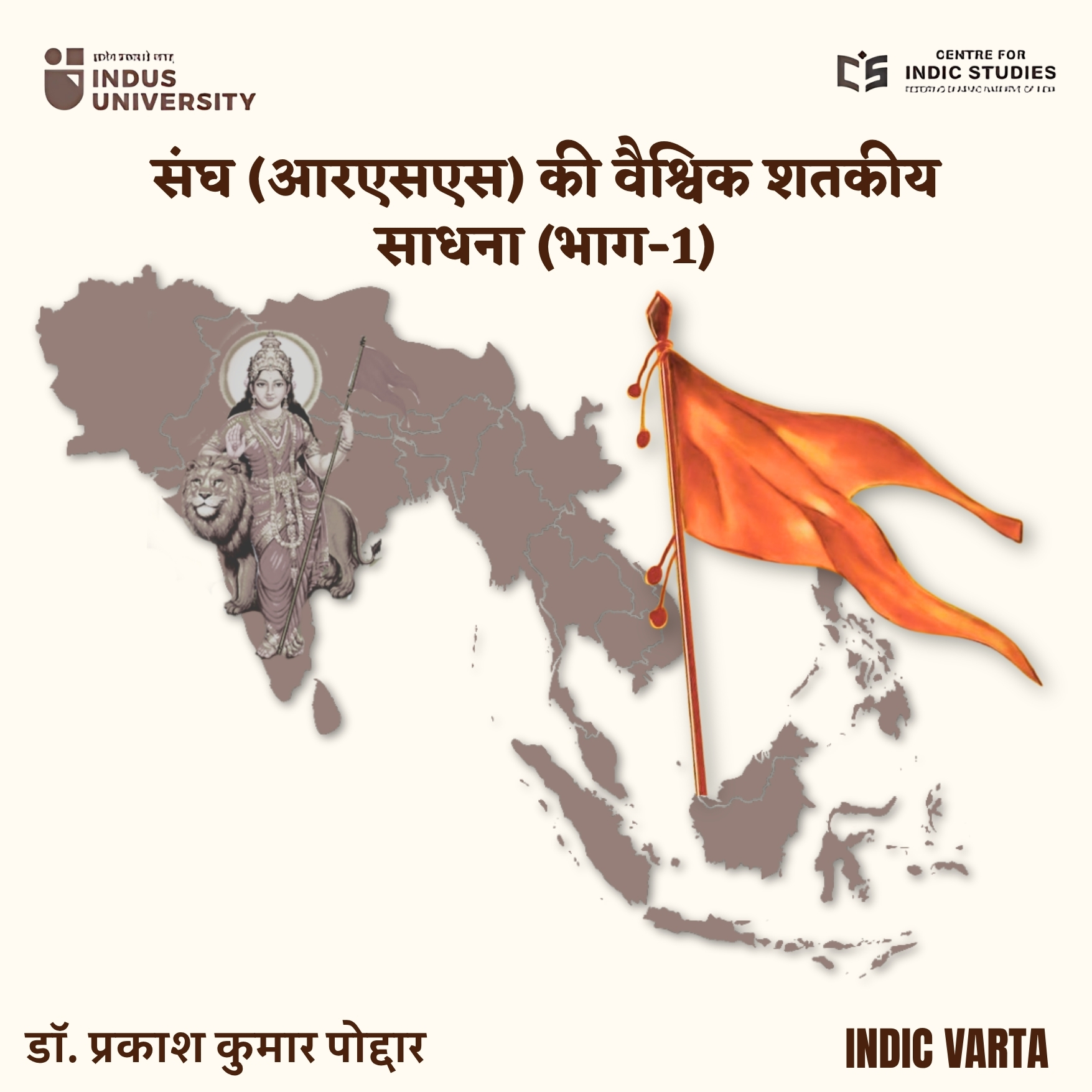- Visitor:39
- Published on: 2025-10-01 02:55 pm
Garba: A Cultural and Spiritual Heritage of Gujarat
In Indian culture, there are many rituals that allow human beings to connect with the Supreme Power. The scriptures describe different rituals and practices for worshipping gods. Because of its diverse spiritual traditions, India is often called the land of festivals. Every season in India begins with a festival, and each festival is marked by unique customs such as fasting, traditional dances, and preparing special foods connected to the occasion.
 (1).jpg)
In Indian tradition, worship (ārādhana) is not limited to rituals alone. It also includes music, dance, and collective celebrations. The scriptures emphasize that art and culture are deeply linked with spirituality and philosophy. Practices like Bhoota Kola, Theyyam, Kathak, Bharatnatyam, and others are seen not just as performances but as devotional offerings to the divine.
In the same way, Garba is a devotional folk dance of Gujarat performed during Navratri. It is dedicated to Devi Durga, also known as Maa Amba, the Supreme of the universe. She is worshipped as the origin of both matter (jaḍa) and consciousness (chetan). Navratri, observed for nine nights in the Sharad ṛtu (after Pitru Paksha), is a celebration of this divine feminine energy in her various forms.
Across India, Navratri is celebrated in different ways, for example, Durga Puja in Bengal, Golu in Tamil Nadu, and Garba or Dandiya Raas in Gujarat. In Gujarat, people gather each night to perform Garba in a circular formation, which symbolizes the endless cycle of time (kāl chakra), while the divine feminine energy at the center represents the eternal truth.
Garba: A Dance of Devotion and Celebration
Garba is a traditional circle dance from Gujarat, performed during the Hindu festival of Navratri in honour of Goddess Amba, a form of Durga. It is also celebrated by the Gujarati community worldwide. The dance is performed in circles around a clay pot with a lit lamp inside, symbolising the womb and the eternal spark of life. In some cases, a picture or idol of the goddess is placed at the center.
The word Garba comes from Garbha, meaning womb, representing life, creation, and energy. Dancing in circles signifies the cyclical nature of life, seasons, and the universe. The lamp within the pot represents the cosmic energy of the Divine Mother, while the circular movements around it symbolise the eternal cycle of birth and death. This conveys the deeper truth of existence, that the soul, under the influence of maya or divine illusion, continues to move through the cycles of birth and rebirth according to its past actions and karma. The goddess, who as maya binds beings to this cycle, is also the source of liberation and the path to moksha or spiritual freedom. During Garba, traditional folk songs of devotion are sung in praise of the goddess.
The roots of Garba are often traced back to the Mahabharata. During his exile, Arjuna, disguised as Bruhannala, learned hallisaka, an ancient circular dance symbolizing birth, life, and rebirth. Later, Lord Krishna popularized this tradition, which evolved into raas, performed with sticks. Over time, Garba absorbed elements of both raas, symbolising masculine energy, and the traditional feminine Garba, creating the vibrant dance form seen today. Beyond devotion, Garba reflects cultural evolution. The rhythmic claps, circular movements, and community participation make it not just a dance but also a celebration of life and divine energy. The songs of Garba hold special importance. They are not just music but heartfelt invitations to the divine mother to descend from her heavenly abode and bless the circle of devotees Songs like “આરાસુર ના અંબે માં તમે ગરબે રમવા આવો” (O Mother Amba of Arasur, come to play Garba), “સોનલ ગરબો શિરે અંબે માં ચાલો ધીરે ધીરે” (With the golden Garbo on your head, O Mother Amba, walk slowly), and “કુમકુમ ના પગલાં પડ્યાં” (Auspicious footprints of vermilion have fallen) are sung to invite the goddess to join in the Garba. By such Garba songs, the player of Garba, called “ખેલૈયા,” lovingly invites the divine mother. In Dakla, a powerful form of Garba, drums are played in temples along with folk songs to welcome the goddess.
Unique Garba of Gujarat
There are also many unique forms of Garba performed across Gujarat. Gof Gunthan is a traditional Navratri Garba dance with more than 250 years of history, performed annually during Sharada Navratri. In Saurashtra, the Koli and Kanabi communities perform a variation of Dandiya Raas. The Mehar community of Porbandar has its own identity, with Maniyaro Raas performed by men and Rasda performed by women, both world-renowned. During Rasda, women adorn themselves with twenty or more tolas of gold jewellery while offering devotion to the goddess.
In Ahmedabad, the Barot community observes a unique 200-year-old tradition known as Sheri Garba. On the eighth night of Navratri, men dress in sarees and perform Garba to honour a woman named Saduba, who had cursed the community two centuries ago after her dignity was not protected. To appease her spirit, a temple was built in her memory where men gather to pray and seek forgiveness. Every year around 800 participants join this ritual at Sadu Mata ni Pol on Ashtami, praying for the long lives and well-being of their children. The Adivasi communities of Gujarat have their own variations of Garba that remain deeply connected to nature and ancestral traditions. One such form is the Divasa Garba, where drumming patterns often mimic the sounds of the forest, and the movements narrate agricultural cycles or spirit-invoking ceremonies. Instead of focusing only on the goddess in a temple sense, these dances honour earth deities, seasonal changes, and community unity, reflecting a worldview where humans, animals, and the landscape form one sacred whole.
Another unique form is the Betha Garba, performed by the Vadnagar Nagar community. This style is usually performed seated, mostly by women. In earlier times, women in this community were considered delicate and did not take part in vigorous physical activity. The sitting Garba gave them a way to participate in devotional expression while still respecting the social and physical norms of their community.
The Changing Face of Garba
With time, many things change, and Garba, which has always been a sacred form of dance and music dedicated to the worship of Shakti, has also undergone transformation. Traditionally, during Sharadiya Navratri, known as the days of adhyashakti worship, people expressed devotion to Maa Amba by singing Garba and performing the dance around the garbdeep placed at the center, considering it a living symbol of divine power.
However, in today’s modern age, the meaning of Garba has completely shifted and even become distorted. What was once an act of pure devotion has now turned largely into entertainment. Earlier, Garba was performed simply around the clay garbo or the idol of the goddess, but today it is often held in large party plots where even shoes and sandals are placed in the center for the ritual circle. Young people leave their local or community Garbas and purchase expensive passes to attend commercial events, where the focus is more on display and extravagance than on devotion. There was a time when Garba was a humble, heartfelt, and inexpensive way of expressing faith and devotion to the goddess. Today, it is often reduced to expensive clothes, costly passes, and superficial showmanship, with almost no spirit of devotion—only entertainment, pleasure, and even moral decline. It is important for us to truly understand our cultural heritage and strive to preserve its essence and values. The festival of Shakti worship should not be turned into a platform of mere entertainment or indulgence but should remain a sacred expression of devotion and faith.
- 19 min read
- 0
- 0









 - Updated (1).jpg)
